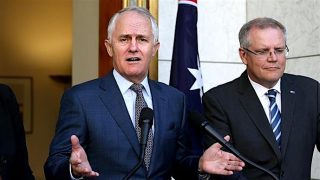The desperate search for greater tax revenue has pinpointed the deficit blowtorch on property gains, negative gearing and superannuation.
 All will take a hit in the May budget.
All will take a hit in the May budget.
The prospect of any GST increase has been comprehensively sidelined.
Opposition Leader Bill Shorten has set the tone by proposing to make negative gearing available only on newly constructed homes. He also argues the subsidy on CGT should be halved from 50% to 25%.
Current rules allow buyers a tax deduction for all investment property expenses – including interest, repairs and management fees – to the extent they exceed rent.
Investors often borrow with the expectation that those expenses will be greater than rental income and then offset that “loss” against their day-job income.
They “enjoy” that tax benefit while they hold the property until it can be sold at a gain over the acquisition and holding costs and then pay CGT on only half the capital gain.
Need Advice?
The system makes owning real estate investment attractive because owners can exploit the tax deductibility of expenses both at an income level and again at a capital level and then get half the capital gain tax free.
The benefits of negative gearing are greater the more you earn and the higher your tax rate.
“It has become a national sport in Australia for the very wealthy to turn their income into capital,” Shorten has said.
While Prime Minister Malcolm Turnbull has gone on record to deny any plan to “increase capital gains tax”, the removal of the 50% concession for those who opt to claim negative gearing benefits is firming as a likely compromise.
This outcome would still allow a buy and hold strategy to generate tax losses to offset against day-job income, but reduce – through higher tax – the capital windfall on an asset sale. It may lead to properties being held for longer periods and create a more stable rental environment.
It might also incentivise speculators – focused on the buy price upside – to double down on their property bets by opting for half the capital gain tax free. To do that – under the coalition method – they will have to forego some expense deductions along the way.
But what of Shorten’s scheme?
By removing negative gearing concessions on established homes, he is setting up that part of the market for renovate-to-sell (and similar) speculation by discouraging long term investor ownership (except if positively geared).
An increase in the CGT take to 75% of the gain might encourage owners to hold new stock for longer – to reach the highest potential re-sale price.
What could be the consequences of the competing proposals?
Certainly Labor’s plan to defer the implementation of its plan until July 2017 could create a spike in house prices before then.
And it’s likely to bring into much sharper focus among buyers the capital appreciation differential between established detached houses on the one hand and high-rise apartments on the other.
The latter market is likely to be depressed – if it is not already so – to give buyers greater assurance of an eventual capital gain.
Commercial real estate is likely to be more sought after as – on present information – neither side has suggested negative gearing changes apply to that sector.
If the changes do apply to the commercial sector, properties may attract a premium from neutrally geared investors, because of their capacity for higher capital gains.
Some (or even most) of these back-of-the-envelope conclusions are sure to be well off the mark.
Inaccurate maybe, but what is certain is that any significant change to the tax deductibility of expenses and the application of taxes on capital gains, will – at least in the short term – alter the dynamic of our property economy.
The era of “converting income into tax free capital” – as Shorten describes it – may well be closing forever.
Even if the tax changes bring in much needed revenue, how will housing affordability be improved?
Most economists argue that changes to negative gearing tax benefits will reduce investor participation in that sector of the market affected – established housing under Labor’s plan – and thereby improve supply and thus affordability for home owners.
Although the government’s version of the changes – which will jolt the market with almost equal effect – its high income earner constituency is unlikely to desert it at the ballot box.
That’s exactly why a coalition tax hike on gearing and gains is so likely.
And by failing to act in May, it will fuel the Opposition’s election year momentum and could deliver to it liberal-leaning voters who are persuaded higher tax revenue is needed to reduce the deficit and fund education & health care.
While legal changes needed for a different Capital Gains concession rate are relatively simple; those required for a gearing change could be – depending on the final proposal – be enormously complex on the one hand or relatively straight forward on the other. The Coalition gearing changes are far more straight forward legally than those of Labor.
The extent of budget changes to superannuation concessions are dependent on how brave Treasurer Morrison is as regards CGT and gearing.
Most likely, the tax will be raised from 15% to the taxpayer’s marginal tax rate, less 15%. Still a very significant concession and one that probably won’t alter super contribution strategies of workers or the self-employed.




0 Comments